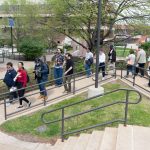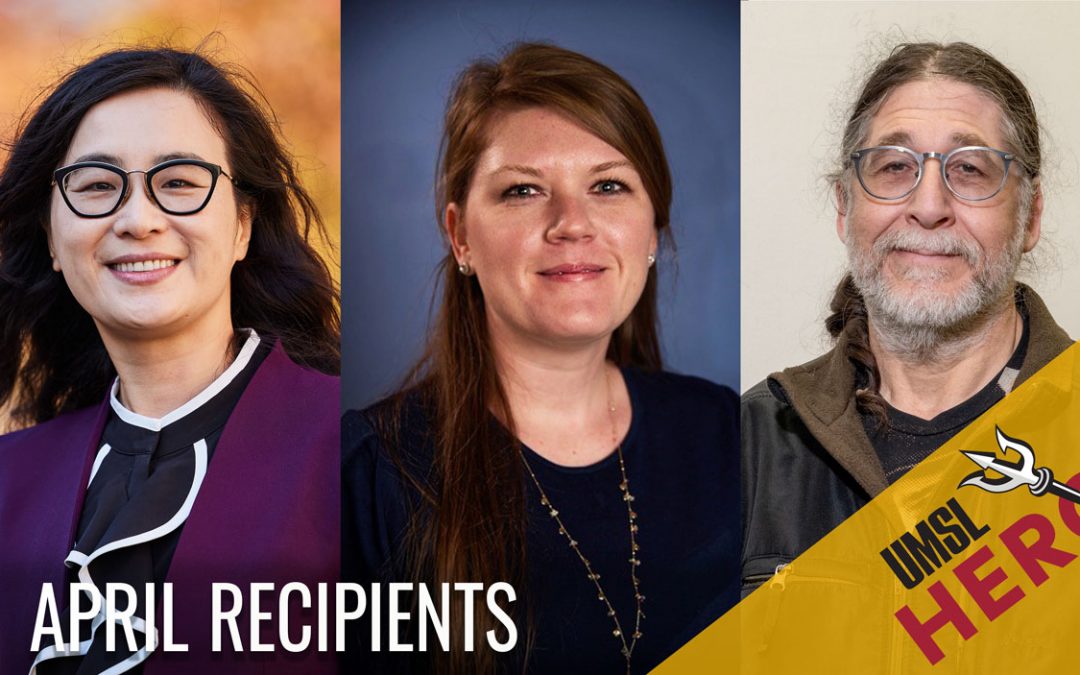
Haitao Li collaborated with researchers from the University of Missouri-Columbia to study how the COVID-19 pandemic impacted labor and food loss in the grape supply chain. The research, funded by a grant from the International Agricultural Trade Research Consortium, can be modified to explore the pandemic’s effect on other agricultural supply chains. (Photo by August Jennewein)
When shoppers grab raisins from grocery store shelves, they likely don’t spend time thinking about how those raisins got on that shelf. They don’t consider the fields growing fresh grapes, factories boxing them and barges or trucks transporting the final product.
But for Haitao Li, thinking about all those things is the point.
The professor of supply chain and analytics at the University of Missouri–St. Louis College of Business Administration is working with colleagues from the University of Missouri–Columbia to find ways to minimize waste and more efficiently move the crop along the supply chain from fresh grapes to neatly packaged boxes of raisins.
With the COVID-19 pandemic came an added level of complexity in the supply chain, offering new research avenues. Li, along with MU Professor of Agricultural and Applied Economics Wyatt Thompson and Senior Research Associate Hoa Hoang, began looking at labor disruption and its effect. Their work is supported by a $17,400 grant awarded in June by the International Agricultural Trade Research Consortium.
The research is a continuation of a collaboration between UMSL’s Supply Chain & Analytics Department and MU’s Agricultural and Applied Economics Department. For about three years, the departments have combined strengths to offer select shared online courses, hold joint conferences and produce innovative research related to supply chains in agricultural markets.
“The research is built upon an integrated framework we already had,” Li said. “We were able to leverage each other’s expertise. Dr. Thompson and Dr. Hoang brought their knowledge and expertise on the food market side. They have a market equilibrium model to study the equilibrium condition of food products by looking into the price, supply and demand, as well as international trade.”
Li had a well-developed supply chain configuration model in place to optimize the best option at each step in the chain, such as transportation. In the food supply chain, transporting products can be complex and requires extensive data to analyze options such as a truck, barge and air freight to determine the best mode of transportation.
When the group learned that IATRC was offering a grant to study the pandemic’s impact on agriculture and food value chains, they thought it would be a perfect fit. The research team focused on food loss and waste in the fresh grape supply chain. They looked at different modes of picking crops, as well as packaging and transportation, paying close attention to the amount of labor required.
“We were able to bring these two sub-models together in an integrated framework and focus on investigating the impact of labor shortage and potential increase of labor cost due to COVID-19,” Li said. “We’ve heard a number of stories, especially from the meat processing industry, where factories had to shut down temporarily because of the shortage of labor and social distancing requirements and worker sickness. Those bring significant challenges to the food supply chain and customer markets, and this is a timely study to address them.”
The study resulted in three significant findings.
First, higher labor costs increase the price of food and, thus, lower consumption. The impacts, however, differ between fresh products (with higher labor cost share) versus processed food (with lower labor cost share).
Second, less labor is available due to factory shutdowns. That reduction results in fewer value-added activities in the supply chain, such as the use of skilled workers for picking, drying and processing, which could potentially encourage the supply chain to shift toward retail goods that use less labor.
Last, less available labor can increase food loss. With less labor, there can be greater food loss in the course of turning farm commodities into retail products, increasing consumer food costs.
Although the study primarily focused on the grape supply chain, the team’s research can be extended to include a range of crops. Li pointed out that additional data are needed as crops’ supply chains differ significantly.
“Each food product has unique market conditions and characteristics, as well as the process in their supply chain,” he said. “With our joint efforts and expertise, we developed a framework where we integrated a macro level model with a more operational level model. This framework provides us a platform for researchers to conduct studies moving forward. The framework can, with proper modifications and extensions, be used to study other products. The door is wide open.”
In their future research, Li and his colleagues plan to investigate different products and develop analytical models to address other challenging issues, such as an integrated supply chain-market study on meat and livestock supply chains and how to better utilize intermodal transportation along the Mississippi River to enhance food transportation and trade.
In spite of the pandemic, Li noted that this year has been productive not only for himself but also for the Supply Chain & Analytics Department. With a new master’s degree program on the horizon and two new faculty members – Assistant Professor Shakiba Enayati and Assistant Professor Trilce Encarnacion – the department is embracing opportunities to grow.
The Supply Chain Risk and Resilience Research institute, headed by Director George Zsidisin, serves as a connection between the department and local industry. Faculty members are working with Express Scripts to better predict and mitigate supply risk in the pharmaceutical industry. They are also collaborating with Ameren to improve their supply chain network.
“It’s been a very challenging year,” Li said. “But on the other hand, that could mean business opportunities for companies as well if they can cope with these challenges in the right way. The uniqueness and edge we have here at UMSL is our ability to leverage the power of data-driven decision-making and analytics with the application domain of supply chains. Now we’re getting into corporate-funded research projects. It’s really a win-win.”














